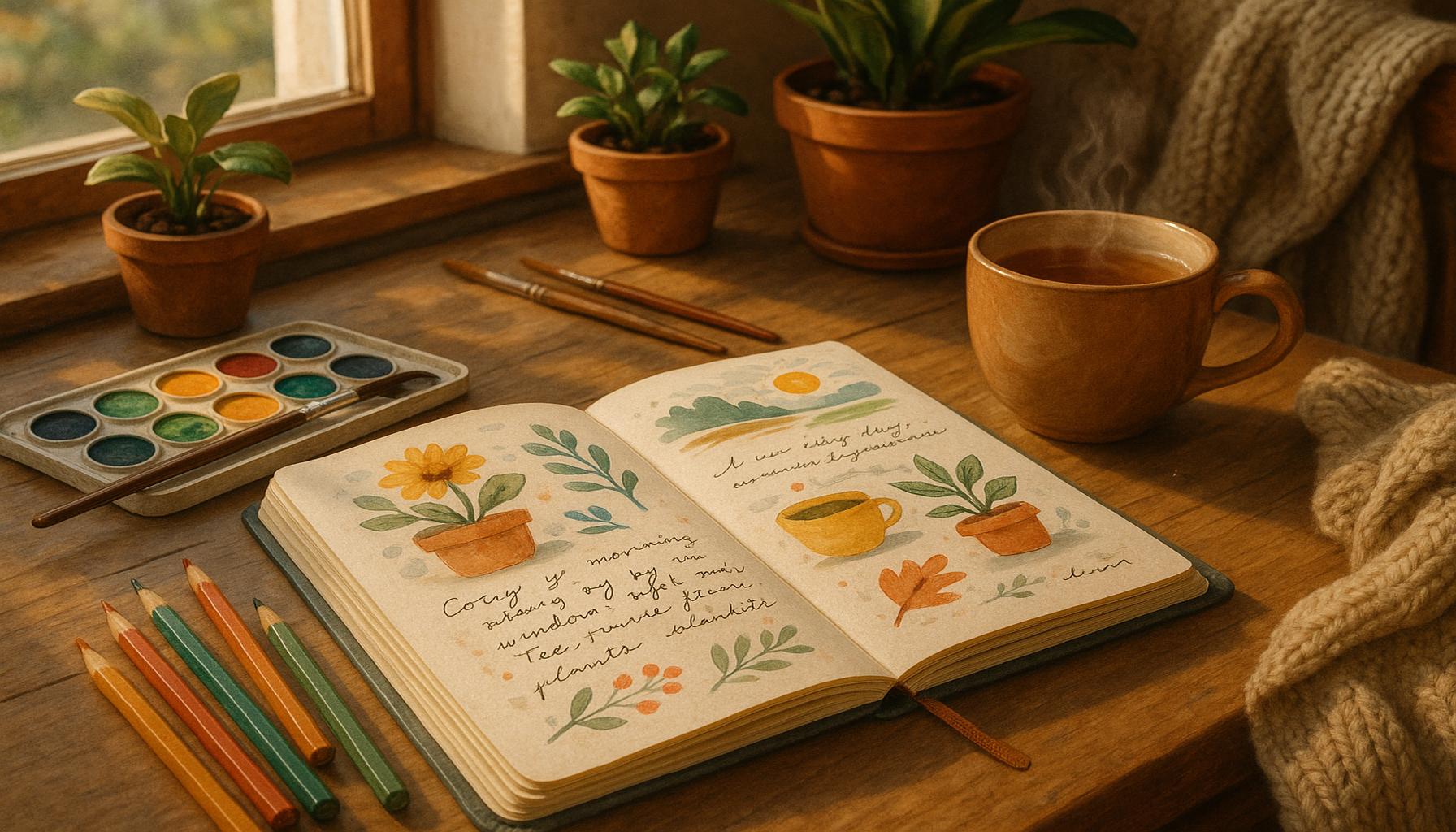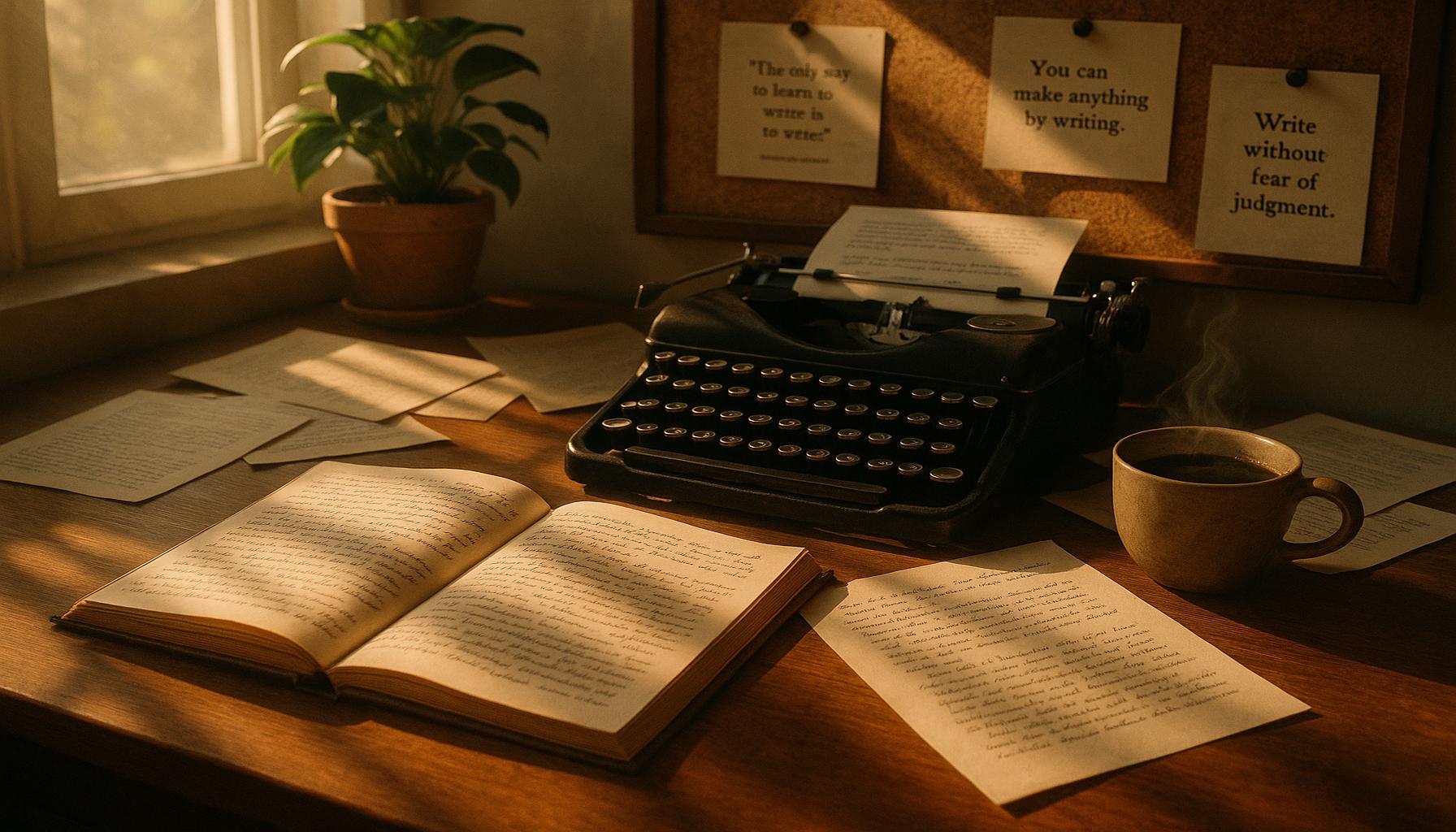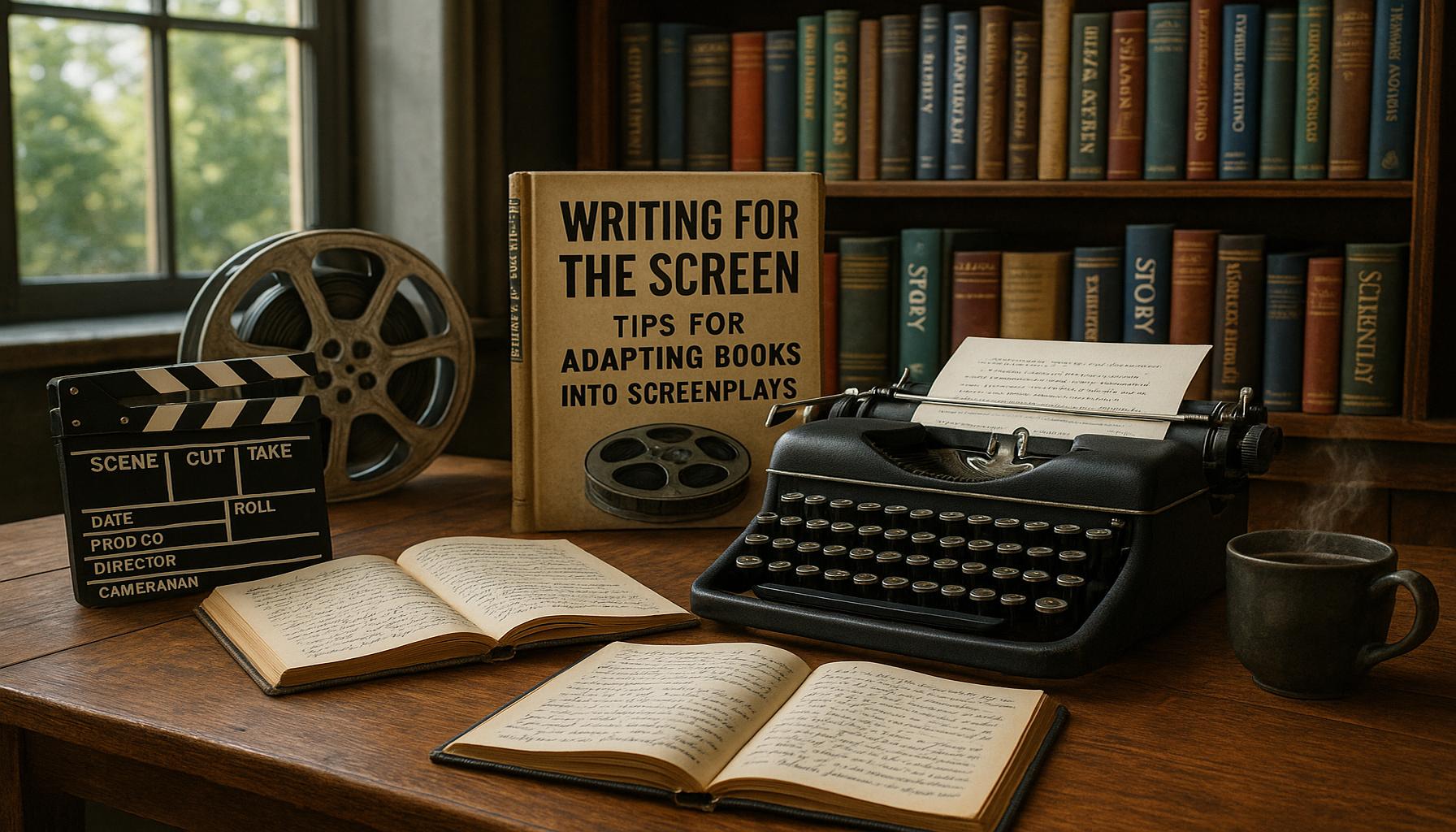Creative Journaling: Techniques to Stimulate Imagination and Personal Reflection

The Power and Potential of Creative Journaling
In a world flooded with digital distractions, creative journaling emerges as a sanctuary for personal expression. This art form transcends mere writing; it serves as a portal for self-discovery and igniting the imagination, paving the way for profound personal insights and emotional well-being.
Creative journaling allows for a multitude of expressions, encouraging individuals to explore their thoughts and feelings through various techniques. These methods serve not only to document experiences but also to facilitate deep reflections and foster creativity. Below are some popular approaches that can elevate your journaling practice:
- Visual Journaling: By combining art and written expression, this technique invites individuals to incorporate sketches, doodles, and collages into their pages. For instance, one might draw a representation of their current mood or create a collage that captures their aspirations. This blend of imagery and words creates a multi-dimensional expression of self that is both personal and vivid.
- Prompt Journaling: Utilizing thought-provoking questions can effectively guide your writing. Prompts like, “What does success look like to me?” or “Describe a defining moment in your life” encourage deeper exploration of personal beliefs and memories. This method stimulates critical thinking and helps clarify goals and aspirations.
- Gratitude Journaling: Focusing on positive experiences fosters a thankful mindset. Each day, one might jot down three things they are grateful for, which has been shown to improve overall mood and emotional resilience. For example, acknowledging small victories, such as finishing a book or enjoying a sunny day, shifts focus away from negative thoughts and enhances well-being.
- Stream of Consciousness: This technique encourages writers to let their thoughts flow without censorship. By writing continuously without editing, individuals can unlock their raw thoughts and feelings, providing valuable insights into their subconscious. This method can be particularly cathartic, allowing for emotional release and clarity during challenging times.
Each technique offers a unique way to cultivate creativity, and by engaging with these practices, you create a rich environment for personal growth and emotional healing. Journaling can become more than just a habit; it can turn into a journey of self-exploration, leading to unexpected revelations about oneself.
As you dive deeper into these methodologies, be prepared to challenge your thinking patterns and rediscover your inner voice. Creative journaling invites you to converse with your thoughts and emotions on the page, transforming everyday musings into profound narratives. Whether you’re an experienced writer or just beginning your journey, the world of creative journaling awaits, promising a cornucopia of insights and imaginative explorations that are just waiting to be uncovered.
DISCOVER MORE: Click here to learn about the evolution of techniques
Unlocking Creative Expression Through Journaling
In an age where introspection often takes a backseat to the hustle of everyday life, creative journaling presents a unique invitation to pause and explore one’s inner landscape. Engaging with your thoughts and feelings through various journaling techniques fosters both imagination and personal reflection. Each method offers risks and rewards, but the common thread is a deeper connection with oneself.
Visual journaling is a popular approach that merges artistry with written word. This technique encourages individuals to paint, draw, or collage alongside their text, transforming journal pages into a visual diary of experiences and emotions. Participants might use colors to symbolize feelings or create abstract art that resonates with their thoughts. Such visual elements can invoke vivid memories and feelings, aiding in self-exploration and creativity. According to a 2021 study by the American Art Therapy Association, engaging in visual arts can significantly enhance emotional resilience and improve mental health.
In contrast, prompt journaling offers a structured way to delve into personal narratives. Writers can select from diverse prompts tailored to specific themes, such as identity, motivation, or relationships. The guided questions can unlock buried emotions and allow for deeper understanding. For example, prompts like “What does my ideal future look like?” can provoke profound reflections on personal aspirations, reshaping how one perceives potential paths. The key is to remain open and honest with responses, letting thoughts flow freely to uncover hidden insights.
- Visual Journaling – Merges art with writing, using sketches and collages to express emotions and experiences.
- Prompt Journaling – Utilizes targeted questions to spark deep exploration of personal beliefs and memories.
- Gratitude Journaling – Focuses on positive experiences to cultivate a thankful mindset.
- Stream of Consciousness – Encourages unedited writing to release raw thoughts and gain clarity.
Another technique that has gained traction is gratitude journaling. This practice shifts focus toward positivity by encouraging writers to document daily moments of appreciation. Research from the University of California, Davis showed that individuals who kept gratitude journals reported significantly higher levels of well-being and happiness over time. By taking a moment to acknowledge achievements or expressions of kindness, people can reframe their outlook on life and dispel feelings of negativity.
Lastly, the stream of consciousness approach allows for unscripted writing where thoughts can pour onto the page without filters. This style of journaling is often liberating and helps flush out emotions that can contribute to stress or anxiety. It’s a space where honesty reigns, providing clarity and enabling individuals to process complex feelings. As with the other techniques, embracing this method may also lead to surprising discoveries about oneself and one’s motivations.
As you explore these unique methods of creative journaling, expect to encounter challenges and triumphs alike. Each technique offers distinct opportunities for growth, prompting you to reflect on your journey and embrace your creative spirit. Journaling, when approached with an open heart and mind, transforms everyday thoughts into expressive art and meaningful narratives. In learning to express your innermost self, you take steps towards profound personal development.
Unlocking Creativity Through Creative Journaling
Creative journaling is not merely a hobby; it is an effective expression of individuality and thought, allowing personal narratives to flourish and creativity to thrive. It taps into imagination while serving as a profound tool for personal reflection. By combining art, writing, and self-exploration, creative journaling invites people to delve deep into their thoughts, emotions, and experiences, fostering a unique relationship with their creativity.
Techniques to Enhance Imagination
One of the most appealing aspects of creative journaling is its versatility. Techniques such as visual mapping, where ideas are laid out graphically, can stimulate imagination by presenting thoughts in a liberating format. These connections often lead to unexpected insights and innovative ideas. Mindfulness writing, where individuals jot down thoughts and feelings without judgment, encourages honest self-expression and heightens awareness of one’s internal landscape.
The Power of Prompts
Utilizing prompts can significantly enhance the journaling process. Starting with a simple question or theme can ignite the creative process. Examples like “What does success look like to me?” or “Describe a moment of joy” challenge the writer to explore their depths and can lead to revelations about personal goals and aspirations. Such prompts create a structured yet freeing environment, making the act of journaling both guided and spontaneous.
Artistic Expression
Incorporating artistic elements, such as doodles, collages, or painting, not only enriches the journal but also allows the mind to wander freely. This method encourages a multi-sensory approach to capture thoughts in diverse formats. Studies suggest that integrating art into journaling enhances cognitive processing and emotional resolution, making memories and feelings more tangible. By creatively visualizing experiences, individuals can reflect on and interpret their lives in profound ways.
The act of creative journaling is a vibrant dance between imagination and reflection, empowering individuals to explore their identities and express themselves authentically. The potential for discovery in this practice is limitless, urging one to embark on this fulfilling journey.
| Category | Description |
|---|---|
| Technique 1 | Visual Mapping – Organizing thoughts visually to foster connections. |
| Technique 2 | Mindfulness Writing – Free flow of thoughts to enhance self-awareness. |
| Benefits | Unlocks deep personal insights and promotes emotional healing. |
These dynamic techniques and practices mark the beginning of a transformative journey through creative journaling, encouraging individuals to engage with their thoughts and emotions in a meaningful way.
DISCOVER MORE: Click here to learn how photography can enhance your emotional well-being
Exploring Diverse Creative Journaling Techniques
Building on the previously discussed methods, there are numerous other creative journaling techniques that can encourage a rich tapestry of imagination and introspection. Each style can resonate differently with individuals, catering to unique preferences and experiences, thus unlocking unforeseen depths of creativity and self-awareness.
Mind Map Journaling is another innovative technique that harnesses visual thinking. By centering a key idea or emotion and branching out with associative thoughts and images, individuals create a web of ideas that uncover hidden connections. This method not only captures thoughts in a dynamic, free-flowing manner but also stimulates the brain to think outside the box. A mind map can serve as a powerful visual representation of one’s mental landscape, leading to a more comprehensive understanding of complex topics or feelings.
- Mind Map Journaling – Creates visual diagrams of ideas, tapping into associative thinking and revealing connections.
- Theme-based Journaling – Focuses on specific themes for a set duration, enhancing exploration of that particular subject.
- Photography Journaling – Incorporates images taken by the writer as a way to provoke thoughts and feelings related to those moments.
- Letter Writing Journals – Encourages writers to compose letters to themselves or others to process emotions and gain perspective.
Theme-based Journaling is also a captivating approach that invites writers to focus intensely on a specific theme over a set duration, such as a month or even a week. Whether it’s love, fear, or personal growth, exploring a singular topic allows for a deeper understanding of one’s beliefs and values. This focused approach often reveals insights that may go unnoticed in more generalized journaling practices. By delving deeper into one theme, the practice encourages both creativity and critical thinking.
Photography Journaling combines the power of imagery with narrative writing. In this method, individuals are encouraged to take photos that resonate with their emotions or experiences, later reflecting on those images in their journals. The visual aspect serves as a catalyst for writing, often stirring memories that might have otherwise gone untapped. In a society saturated with visual content, employing photography as a reflective tool can significantly enhance personal narratives, making them more emotive and relatable.
Within the realm of letter writing journals, a unique form of self-dialogue emerges. Writers compose letters to themselves, their future selves, or even to friends or family. This technique helps individuals articulate feelings they might find difficult to express in spoken dialogue. It serves as a safe space to explore unresolved issues, offer words of encouragement to oneself, or seek closure regarding complicated relationships. The cathartic release of penned thoughts often allows for enhanced clarity and understanding of one’s emotional state.
Engaging in these diverse creative journaling techniques provides individuals with the tools to enrich their emotional vocabulary and stimulate imaginative thoughts. Each method fosters a unique exploration of self, encouraging not only creativity but also a profound sense of personal reflection. Whether drawn to the artistry of mind mapping or the intimate prose of letter writing, the possibilities of creative journaling are boundless, inviting everyone to embark on a transformative journey of self-discovery.
DIVE DEEPER: Click here to discover more about musical collaboration
Conclusion: Unleashing the Power of Creative Journaling
In today’s fast-paced world, creative journaling stands out as an invaluable tool for individuals seeking to tap into their imagination and explore their inner thoughts. The techniques discussed, from mind mapping to theme-based journaling, and even photography journaling, provide unique avenues for introspection and creativity. Each method offers its distinct advantages, empowering writers to articulate their feelings, document their growth, and confront complex emotions in a straightforward yet profound manner.
As we delve deeper into personal reflection, we invites readers to consider incorporating these techniques into their daily routines. Imagine starting each day with a mind map of your aspirations or unwinding by documenting your thoughts through letters—a practice that fosters emotional clarity. These creative processes not only enrich our emotional vocabulary but also enhance our overall well-being. Whether utilized as a therapeutic outlet or a means of artistic expression, the possibilities of creative journaling are boundless.
Ultimately, it’s essential to remember that there is no right or wrong way to journal. The key is to embrace your unique style and let your imagination run wild. By doing so, you open the doorway to deeper self-discovery and the chance to document your evolving narrative. So, gather your writing materials and embark on this enriching journey into the world of creative journaling—where the extraordinary lies within the pages of your own story.



